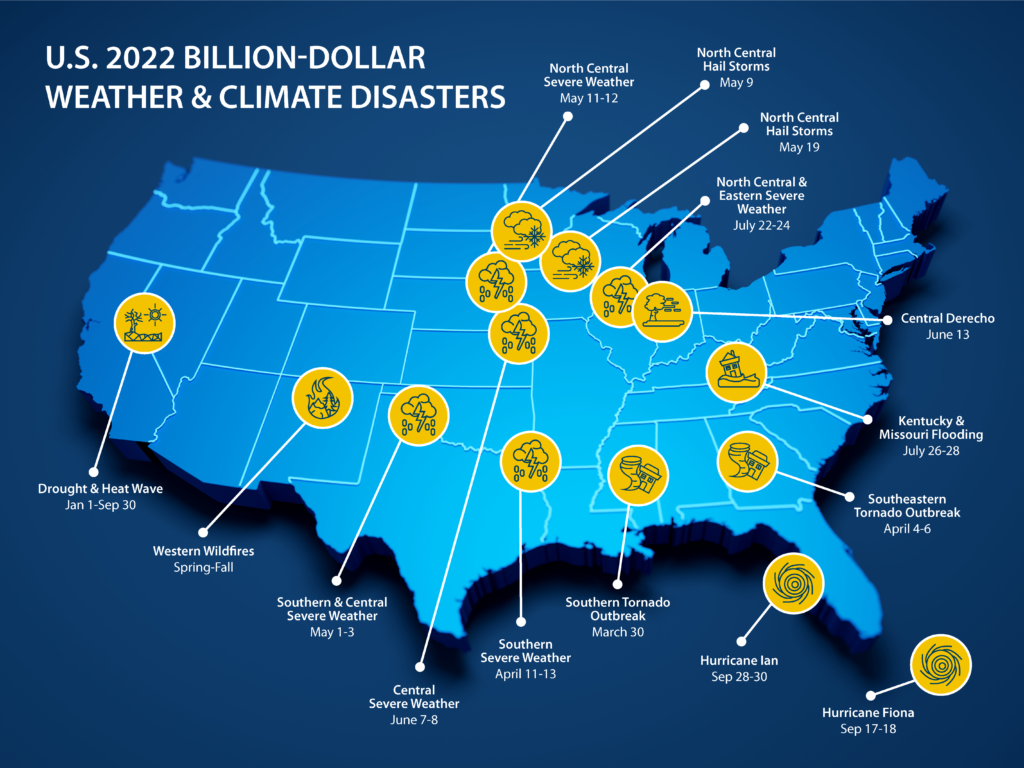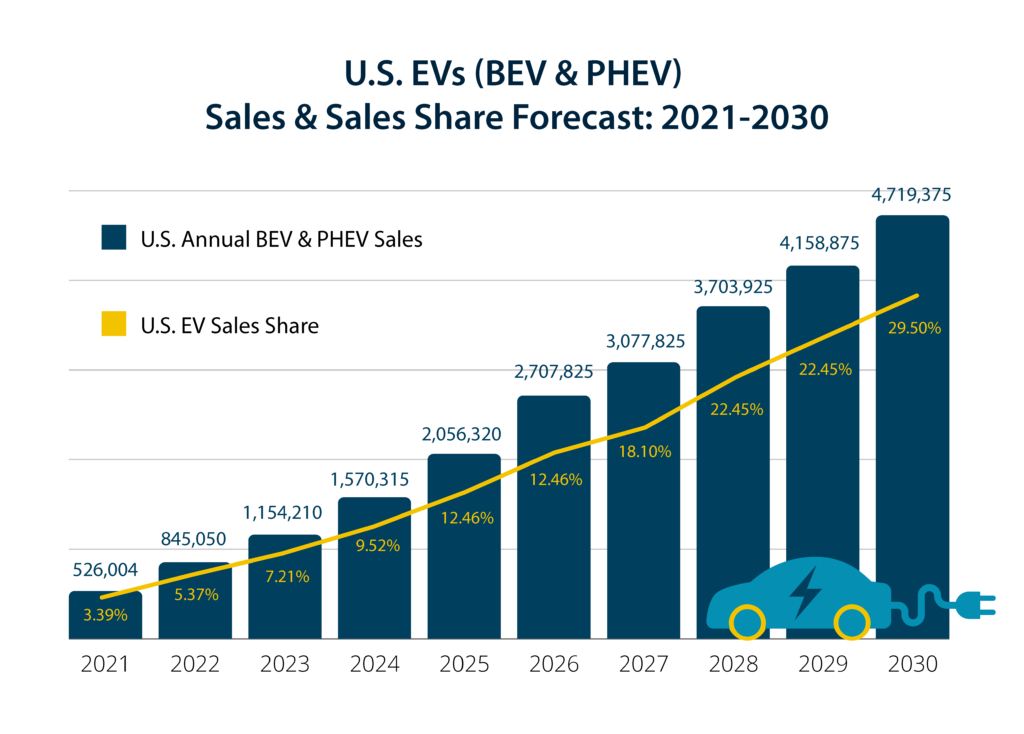Ecological trends for 2023 and beyond

Editor’s note: This article is part of an annual four-part series on trends impacting small and midsize businesses. In Part 2, we study ecological trends for 2023.
On August 16, 2022, President Biden signed the Inflation Reduction Act (IRA), reaffirming a commitment to U.S. climate policy, including the target of cutting greenhouse gas (GHG) emissions in half by 2030, lower than 2005 levels. i Before the pandemic, many of the top polluting nations struggled to keep pace with commitments they had made in the Paris Agreement.
To view emissions progress by country or sector, see the Climate Action Tracker.
The Bipartisan Infrastructure Deal passed by Congress dedicated funding to strengthening resilience to extreme weather events, reducing greenhouse gas emissions, expanding the power grid and improving water security.
The U.S. has also ratified the Kigali Amendment to the Montreal Protocol, a 1987 treaty signed by 130 nations including Russia, China and India. The agreement compels countries to limit the use of hydrofluorocarbons (HFCs) — potent greenhouse gases often used in commerce including refrigeration. U.S. manufacturers supported the treaty.
Companies are also re-evaluating the impact they make on their environment.
Other 2023 trends
Part 1: Technology trends for 2023 and beyond
Part 3: Economic trends for 2023 and beyond
Part 4: Social trends for 2023 and beyond
Special Report: The State of Employment and Wages
ESG policies take center stage
Environmental, social and corporate governance (ESG) has been a focal point for public companies for some time. There is a sea change occurring in private companies where employers are taking a more holistic view of the impact they have on their communities and the world. Private equity firms are taking stock of ESG policies in their evaluation of acquisition targets. The pandemic also magnified employee awareness of their employers’ ESG policies to include employee wellness programs.
Some organizations must adhere to the requirements of the public companies they serve. For many, their public company customers do not have clear directives or standards that define what success looks like, prompting vendors to take a leadership role in defining tangible ESG outcomes. While controversial among environmental groups, companies have expanded their purchases of carbon offsets.
Given this focus, members are reframing roles and responsibilities. Some name an ESG champion while others have elevated safety to “environmental safety” as a key corporate function. Employers are designing ESG roadmaps that prescribe various corporate policies, reporting and communication protocols. Learn more about how to create an ESG roadmap here.
Large-scale weather events
The gravity of weather events is having a material financial impact and represents a clear and present danger to small and midsize businesses (SMBs). As of October 11, 2022, there has been $15 billion in damage due to weather/climate in the U.S. (not including Hurricane Ian, which is expected to cost more than $100 billion in property damage alone). From 1980-2021, there was an annual average of 7.7 billion-dollar events, and in the last five years, 17.8 average events.

Source: National Centers for Environmental Information
In light of such extreme weather events, companies are becoming more mindful of business continuity planning, including technology redundancies and responses to threats to the power grid.
Download a contingency planning checklist to better prepare your organization for large-scale weather events.
The Biden administration released a 10-year plan to combat wildfires with the goal of reducing hazardous fuels on 50 million acres of U.S. forestland by 2030. The plan includes mechanical removal and controlled burns, but the Administration has also been criticized for a lack of forest control causing some recent wildfires including the Caldor fire in California. ii
Actions your company can take to reduce environmental impact
Here are strategies businesses can employ to reduce their impact on the environment:
Increased WFH or hybrid working: Studies found that working from home four days a week where possible would reduce the amount of nitrogen dioxide — the main pollutant generated by traffic emissions — by around 10%. Limited in-office staffing (hybrid) is expected to reduce air pollution by 8%.
Biophilic design: Biophilic design looks at all possible ways to incorporate plants and natural light into a building. As well as having productivity and wellness benefits, biophilic design helps naturally clean the surrounding air. Early adopters include Amazon, who is currently constructing a $5 billion headquarters in Virginia with “more paths, green space, and diversity of design.”
Fewer large in-person events: A 3-day, 1,000-person event generates 523 metric tons of CO2. Organizations such as ISLA work with agencies and brands to create sustainable events.
Transparency reports: Stakeholders and customers are demanding specific carbon footprint accountability and conducting audits of their supply chains.
Smart devices: As higher energy prices come into play, there is movement toward smart devices that promote energy savings. Amazon, Apple and Google are developing Wi-Fi-enabled light bulbs and other home automation apps that control lighting, heating and cooling. During the pandemic, many companies updated their facilities and incorporated energy management into their designs, allowing for better control and tracking of energy consumption.
Circular design: The concept of the circular economy was born in the 1980s as a counterpoint to the linear economy. New products can include a regenerative life cycle that supports sustainability.
Green leases: A green lease is a traditional commercial real estate lease that includes sustainability clauses in the contract. For example, a green lease may require that tenants comply with certain operational guidelines such as strict waste management and recycling standards[GJ3].
Industrial waste treatment: There are significant purification processes necessary to remove contaminants before the treated water can be reused or released into the environment.iii
Water security
Every year, over one billion people worldwide lack access to an acceptable quantity and quality of drinkable water. Population growth, lifestyle changes, real estate development and agricultural practices will drive increased water demand in the decades ahead. iv Urbanization has created megacities such as Dhaka, Karachi and Lagos, which suffer from poor sanitation and waste management.
Agriculture consumes 70% of the world’s water supply, and U.S. growers are actively working to reduce water usage. Strategic ideas include the creation of irrigation pipelines, cover crops and tillage management.
For more, see the Global Report on The Future of Water.
Electric vehicles go mainstream
Driven by mandates and government incentives around the world, electric vehicle adoption is expected to increase by 6x through 2030.

Source: EVAdoption
There is a significant opportunity for commercial applications of EV and autonomous vehicles. The global electric commercial vehicle market is expected to grow to 353,000 units in 2022, and 30% per year for the next decade. v Companies with large fleet operations are grappling with the complexity of ramping up specialized depots and fleet stations as fuel prices continue to escalate.
In addition to the commercialization of buses, vans, pickups and tractors, there will be rapid adoption of “last mile” commercial vehicles in warehousing, led by Amazon’s announcement to procure 1,000,000 electric commercial vehicles. With demand in India and other emerging nations, the 150-mile segment is expected to have the fastest growth in the short term.
Companies will need to continue investing in ESG and considering their impact on the environment in order to stay competitive.
References
ii CBS News
iii GoSquared
iv Global Trends: Office of the Director of National Intelligence
v Electric Commercial Market by Research and Markets
Related Resources
Jan 13. webinar: Trends for 2023 and beyond [Register in the blue box]
Category : Economic / Future Trends
Tags: ecological trends in business, future trends, trends affecting business
